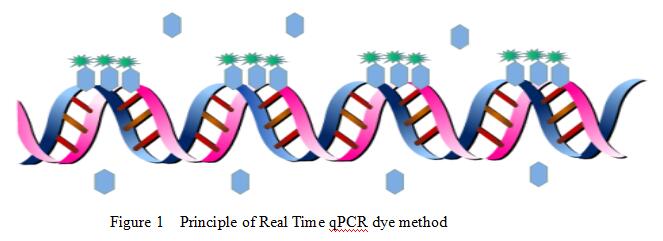Real Time qPCR, a gene real-time monitoring expert
Gene is regarded as the most important information carrier of organism. It stores all the genetic information of organisms, determines the biological characteristics, classification, life cycle and other characteristics. However, genes don’t directly join in the regulation of life activities. In higher organisms, DNA is served as template to get RNA by transcription, some RNA guide making protein by translation, the protein is directly joined in kinds of life activities. RNA play an important role connecting gene and protein. The RNA will directly or indirectly take part in the process of protein translation, gene regulation and nucleic acid cutting. All of these support that the study and test of RNA will help us discovering the base of life.
RNA detection is not unfamiliar to each of us. For example, it has been used for detecting the virus of H1N9, HVB, HCV and so on. The nature RNA is single chain, and this structure is instable. The RNA enzyme can degrade RNA quickly, so the single chain RNA need to be translated into cDNA which is more stable than RNA. It will make the next work becoming very convenient. At present, there are two detection techniques, Real Time qPCR dye method and Real Time qPCR probe method. They are used for quantitative detecting concentration of the cDNA in samples.
Real Time qPCR dye method base on fluorescent dye SYBR Green. The SYBR Green is a flat small molecule of chemistry, owning faint fluorescent. It can specific recognise and bind with the small wave of the DNA, and send out intense fluorescence (figure 1). The concentration of DNA is positive correlation with fluorescence intensity. The Real Time qPCR dye method has many advantages, eg: cheap, convenient and so on. But its disadvantages are very abvious. The SYBR Green can bind with all of the DNA in samples, lack specific, and only get contrast concentration with reference gene. So which also determines this method only can be used in lab, unable suiting for medical testing.

Real Time qPCR probe method is more complicated than dye method. It makes up of a pair of specific primers for the target cDNA fragment and a cDNA probe which is labeled both with a reporter dye (R) linked to the 5’ end and a nonfluorescent quencher (P) linked to the 3’ end. The nonfluorescent quencher is usually labeled with a minor groove binder (MGB) which can increase the melting temperature (Tm) without increasing probe length (figure 2). When the probe keep a complete structure, the system of Real Time qPCR don’t send to fluorescent. With Taq enzyme 5'-3' exonuclease activity for dsDNA, the nonfluorescent quencher will be cut. At the same time, the luminescent group will emit fluorescence. The concentration of DNA is positive correlation with fluorescence intensity. The probe method has some disadvantages, including complex operation, expensive, and so on. But it had been reported that Real Time qPCR probe method is the most effective and stable method for cDNA testing, widely used in medical testing.

Cloud-Clone Corp. supports for the service of Real Time qPCR. We have gained a great deal of experience in the design and synthesis of primers and probes. At the same time, we can support the animal model and cell laboratory services, provide customers with a more comprehensive one-stop service experience.
For more products, please visit: www.cloud-clone.com.
